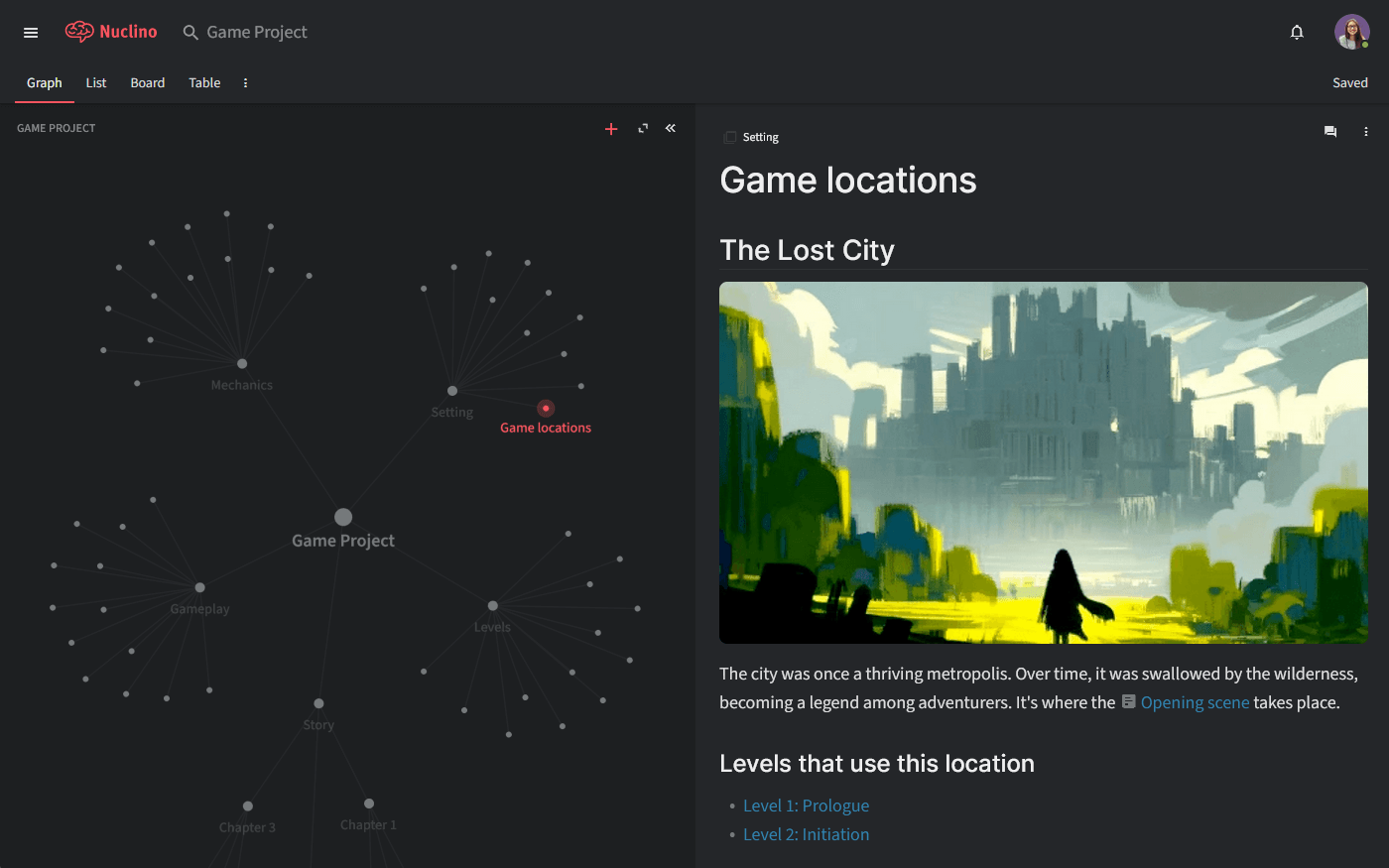The Ultimate Guide to Game Development
Learn how successful games are built, from start to finish.
Video game development is the art of creating games, from the initial concept to the final release. It exists at the intersection of multiple fields, including computer science, creative writing, and graphic design. It may involve thousands of developers, designers, artists, writers, sound engineers, and testers, or be done by a single indie game developer.
This guide covers the fundamentals of game development and design, giving you all the tips, tricks, and tools you need to get started with your next game project.
- Game development process
- Game design
- Game design document
- Worldbuilding
- Level design
- Pitching games to publishers
Game development process
The game development process can take anything from a few weeks to over a decade. It can be broken down into three main stages:
Pre-production: the planning stage during which the scope of the game is determined.
Production: the execution stage during which the studio takes the concepts created during pre-production and turns them into source code and various assets.
Post-production: the maintenance stage during which bugs are fixed and new DLCs are released.
Read our in-depth guides to learn more about game development and discover the best game development tools:
- Video game development process
- Best game development software
- Best enterprise game development software
- How to plan a game development project
- Best project management software for game development
- Best HacknPlan alternatives
Game design
Game design refers to the conceptual side of game development. It is essentially a collection of decisions about what the game should be and how it should work. That includes its gameplay, characters, storylines, locations, UI, and so on.
Game design principles can vary significantly depending on the game genre. For instance, role-playing games (RPGs) center around immersive storytelling and character development. Game designers in this genre focus on creating vast, detailed worlds with engaging narratives. On the other hand, if you're designing a hybrid-casual mobile game, you need to strike a balance between accessibility and depth, combining elements of casual gameplay with more complex mechanics. Each genre demands a unique approach, ensuring the game design aligns with the player expectations and experience.
Game design document
The first step of the game design process is to create a game design document (GDD). It serves as a blueprint from which your game is to be built.

A GDD usually includes:
Executive summary (game concept, genre, target audience, project scope, etc.)
Gameplay (objectives, game progressions, in-game GUI, etc.)
Mechanics (rules, combat, physics, etc.)
Game elements (story, characters, locations, levels, etc.)
Assets (music, sound effects, 2D/3D models, etc.)
Learn how to write a game design document and use our GDD template.
Worldbuilding
A fundamental part of designing a game is to construct the fictional world in which the story will take place. The task of worldbuilding can be as complex as creating an entirely new universe with its own history and laws of nature, or as simple as slightly altering the details of our own world to fit the story.
Learn more about worldbuilding.
Level design
Level design brings together all elements of the game to shape the player experience: game mechanics, gameplay, obstacles, story, and so on. Its objective is to create interactive situations or events within the game environment to challenge the player and keep them engaged and immersed.
Learn more about game level design.
Pitching games to publishers
A game pitch is your opportunity to sell the vision of your game to potential investors, team members, studios, and game journalists. Unfortunately, as Jason Della Rocca, the former executive director of the International Game Developers Association, puts it — "most developers suck at pitching".
Learn more about game pitches.